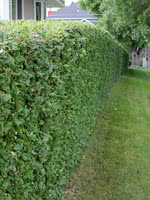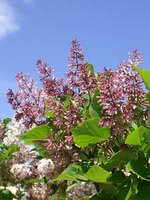Mon-Fri 9am - 5pm Mountain time
Peking Cotoneaster vs Manchurian Lilac (Korean Lilac)
Cotoneaster acutifolia
Syringa pubescens ssp. patula
NOT AVAILABLE THIS SEASON - MIGHT RETURN
NOT AVAILABLE THIS SEASON - MIGHT RETURN
Peking Cotoneaster is a medium-sized shrub that is well adapted to colder climates. Best suited for use as a hedge, Peking Cotoneaster has dark green foliage that turns a stunning reddish orange in the fall.
Hardy fruit guru, Bernie Nikolai (DBG Fruit Growers), has started to recommend grafting hardy pear varieties to Peking Cotoneaster after his experiences were successful and produced fruit faster than other rootstocks. Remember to leave some nurse limbs if you try this.
Manchurian Lilac (aka Korean Lilac) is a medium-sized shrub that features fragrant clusters of pale purple flowers in late spring.
Manchurian Lilac is less affected by disease than other lilacs and will create a beautiful border, hedge, or privacy screen. If you are looking for a lilac for your shelterbelt, consider Common Purple Lilac or Villosa Lilac first.
Peking Cotoneaster Quick Facts
Manchurian Lilac (Korean Lilac) Quick Facts
In row spacing: 0.3 m (1.0 ft)

